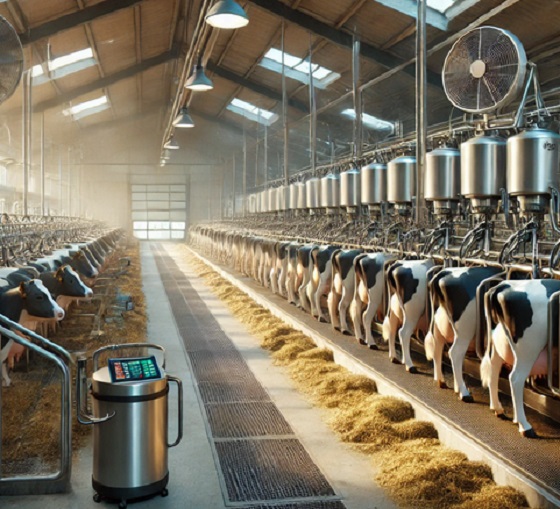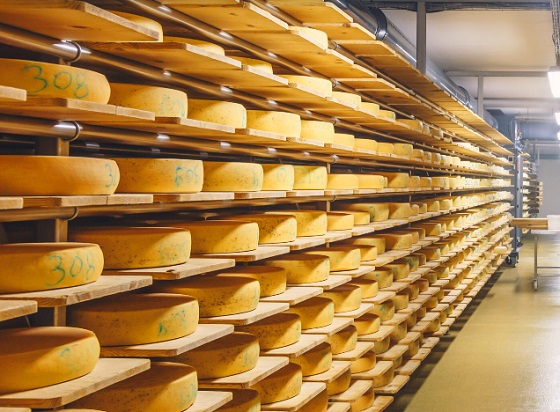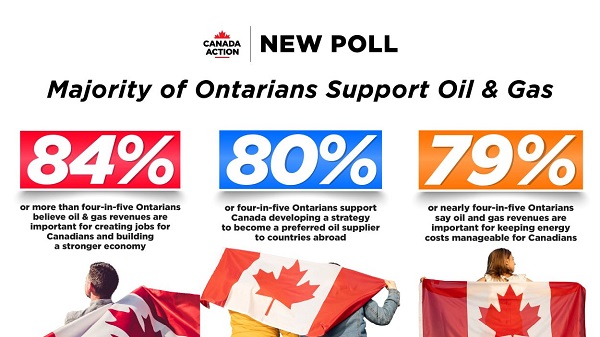Agriculture
Dairy Farmers Need To Wake Up Before The System Crumbles

From the Frontier Centre for Public Policy
Without reform, Canada risks losing nearly half of its dairy farms by 2030, according to experts
Few topics in Canadian agriculture generate as much debate as supply management in the dairy sector. The issue gained renewed attention when former U.S. President Donald Trump criticized Canada’s protectionist stance during NAFTA renegotiations, underscoring the need to reassess the system’s long-term viability.
While proponents argue that supply management ensures financial stability for farmers and shields them from global market volatility, critics contend that it inflates consumer prices, limits competition, and stifles innovation. A policy assessment titled Supply Management 2.0: A Policy Assessment and a Possible Roadmap for the Canadian Dairy Sector, conducted by researchers at Dalhousie University and the University of Guelph, sheds light on the system’s inefficiencies and presents a compelling case for reform.
Designed in the 1970s to regulate production and stabilize dairy prices, Canada’s supply management system operates through strict production quotas and high import tariffs. However, as successive trade agreements such as the USMCA, CETA, and CPTPP erode these protections, the system appears increasingly fragile. The federal government’s $3-billion compensation package to dairy farmers for hypothetical trade losses is a clear indication that the current structure is unsustainable.
Instead of fostering resilience, supply management has created an industry that is increasingly dependent on government payouts rather than market-driven efficiencies. If current trends persist, Canada could lose nearly half of its dairy farms by 2030 — regardless of who is in the White House.
Consumer sentiment is also shifting. Younger generations are questioning the sustainability and transparency of the dairy industry, particularly in light of scandals such as ButterGate, where palm oil supplements were used in cow feed to alter butterfat content, making butter harder at room temperature. Additionally, undisclosed milk dumping of anywhere between 600 million to 1 billion litres annually has further eroded public trust. These factors indicate that the industry is failing to align with evolving consumer expectations.
One of the most alarming findings in the policy assessment is the extent of overcapitalization in the dairy sector. Government compensation payments, coupled with rigid production quotas, have encouraged inefficiency rather than fostering innovation. Unlike their counterparts in Australia and the European Union — where deregulation has driven productivity gains — Canadian dairy farmers remain insulated from competitive pressures that could otherwise drive modernization.
The policy assessment also highlights a growing geographic imbalance in dairy production. Over 74% of Canada’s dairy farms are concentrated in Quebec and Ontario, despite only 61% of the national population residing in these provinces. This concentration exacerbates supply chain inefficiencies and increases price disparities. As a result, consumers in Atlantic Canada, the North, and Indigenous communities face disproportionately high dairy costs, raising serious food security concerns. Addressing these imbalances requires policies that promote regional diversification in dairy production.
A key element of modernization must involve a gradual reform of production quotas and tariffs. The existing quota system restricts farmers’ ability to respond dynamically to market signals. While quota allocation is managed provincially, harmonizing the system at the federal level would create a more cohesive market. Moving toward a flexible quota model, with expansion mechanisms based on demand, would increase competitiveness and efficiency.
Tariff policies also warrant reassessment. While tariffs provide necessary protection for domestic producers, they currently contribute to artificially inflated consumer prices. A phased reduction in tariffs, complemented by direct incentives for farmers investing in productivity-enhancing innovations and sustainability initiatives, could strike a balance between maintaining food sovereignty and fostering competitiveness.
Despite calls for reform, inertia persists due to entrenched interests within the sector. However, resistance is not a viable long-term strategy. Industrial milk prices in Canada are now the highest in the Western world, making the sector increasingly uncompetitive on a global scale. While supply management also governs poultry and eggs, these industries have adapted more effectively, remaining competitive through efficiency improvements and innovation. In contrast, the dairy sector continues to grapple with structural inefficiencies and a lack of modernization.
That said, abolishing supply management outright is neither desirable nor practical. A sudden removal of protections would expose Canadian dairy farmers to aggressive foreign competition, risking rural economic stability and jeopardizing domestic food security. Instead, a balanced approach is needed — one that preserves the core benefits of supply management while integrating market-driven reforms to ensure the industry remains competitive, innovative and sustainable.
Canada’s supply management system, once a pillar of stability, has become an impediment to progress. As global trade dynamics shift and consumer expectations evolve, policymakers have an opportunity to modernize the system in a way that balances fair pricing with market efficiency. The recommendations from Supply Management 2.0 suggest that regional diversification of dairy production, value-chain-based pricing models that align production with actual market demand, and a stronger emphasis on research and development could help modernize the industry. Performance-based government compensation, rather than blanket payouts that preserve inefficiencies, would also improve long-term sustainability.
The question is no longer whether reform is necessary, but whether the dairy industry and policymakers are prepared to embrace it. A smarter, more flexible supply management framework will be crucial in ensuring that Canadian dairy remains resilient, competitive, and sustainable for future generations.
Dr. Sylvain Charlebois is senior director of the agri-food analytics lab and a professor in food distribution and policy at Dalhousie University.
Agriculture
The Climate Argument Against Livestock Doesn’t Add Up

From the Frontier Centre for Public Policy
Livestock contribute far less to emissions than activists claim, and eliminating them would weaken nutrition, resilience and food security
The war on livestock pushed by Net Zero ideologues is not environmental science; it’s a dangerous, misguided campaign that threatens global food security.
The priests of Net Zero 2050 have declared war on the cow, the pig and the chicken. From glass towers in London, Brussels and Ottawa, they argue that cutting animal protein, shrinking herds and pushing people toward lentils and lab-grown alternatives will save the climate from a steer’s burp.
This is not science. It is an urban belief that billions of people can be pushed toward a diet promoted by some policymakers who have never worked a field or heard a rooster at dawn. Eliminating or sharply reducing livestock would destabilize food systems and increase global hunger. In Canada, livestock account for about three per cent of total greenhouse gas emissions, according to Environment and Climate Change Canada.
Activists speak as if livestock suddenly appeared in the last century, belching fossil carbon into the air. In reality, the relationship between humans and the animals we raise is older than agriculture. It is part of how our species developed.
Two million years ago, early humans ate meat and marrow, mastered fire and developed larger brains. The expensive-tissue hypothesis, a theory that explains how early humans traded gut size for brain growth, is not ideology; it is basic anthropology. Animal fat and protein helped build the human brain and the societies that followed.
Domestication deepened that relationship. When humans raised cattle, sheep, pigs and chickens, we created a long partnership that shaped both species. Wolves became dogs. Aurochs, the wild ancestors of modern cattle, became domesticated animals. Junglefowl became chickens that could lay eggs reliably. These animals lived with us because it increased their chances of survival.
In return, they received protection, veterinary care and steady food during drought and winter. More than 70,000 Canadian farms raise cattle, hogs, poultry or sheep, supporting hundreds of thousands of jobs across the supply chain.
Livestock also protected people from climate extremes. When crops failed, grasslands still produced forage, and herds converted that into food. During the Little Ice Age, millions in Europe starved because grain crops collapsed. Pastoral communities, which lived from herding livestock rather than crops, survived because their herds could still graze. Removing livestock would offer little climate benefit, yet it would eliminate one of humanity’s most reliable protections against environmental shocks.
Today, a Maasai child in Kenya or northern Tanzania drinking milk from a cow grazing on dry land has a steadier food source than a vegan in a Berlin apartment relying on global shipping. Modern genetics and nutrition have pushed this relationship further. For the first time, the poorest billion people have access to complete protein and key nutrients such as iron, zinc, B12 and retinol, a form of vitamin A, that plants cannot supply without industrial processing or fortification. Canada also imports significant volumes of soy-based and other plant-protein products, making many urban vegan diets more dependent on long-distance supply chains than people assume. The war on livestock is not a war on carbon; it is a war on the most successful anti-poverty tool ever created.
And what about the animals? Remove humans tomorrow and most commercial chickens would die of exposure, merino sheep would overheat under their own wool and dairy cattle would suffer from untreated mastitis (a bacterial infection of the udder). These species are fully domesticated. Without us, they would disappear.
Net Zero 2050 is a climate target adopted by federal and provincial governments, but debates continue over whether it requires reducing livestock herds or simply improving farm practices. Net Zero advocates look at a pasture and see methane. Farmers see land producing food from nothing more than sunlight, rain and grass.
So the question is not technical. It is about how we see ourselves. Does the Net Zero vision treat humans as part of the natural world, or as a threat that must be contained by forcing diets and erasing long-standing food systems? Eliminating livestock sends the message that human presence itself is an environmental problem, not a participant in a functioning ecosystem.
The cow is not the enemy of the planet. Pasture is not a problem to fix. It is a solution our ancestors discovered long before anyone used the word “sustainable.” We abandon it at our peril and at theirs.
Dr. Joseph Fournier is a senior fellow at the Frontier Centre for Public Policy. An accomplished scientist and former energy executive, he holds graduate training in chemical physics and has written more than 100 articles on energy, environment and climate science.
Agriculture
End Supply Management—For the Sake of Canadian Consumers

This is a special preview article from the:
U.S. President Donald Trump’s trade policy is often chaotic and punitive. But on one point, he is right: Canada’s agricultural supply management system has to go. Not because it is unfair to the United States, though it clearly is, but because it punishes Canadians. Supply management is a government-enforced price-fixing scheme that limits consumer choice, inflates grocery bills, wastes food, and shields a small, politically powerful group of producers from competition—at the direct expense of millions of households.
And yet Ottawa continues to support this socialist shakedown. Last week, Prime Minister Mark Carney told reporters supply management was “not on the table” in negotiations for a renewed United States-Mexico-Canada Trade Agreement, despite U.S. negotiators citing it as a roadblock to a new deal.
Supply management relies on a web of production quotas, fixed farmgate prices, strict import limits, and punitive tariffs that can approach 300 percent. Bureaucrats decide how much milk, chicken, eggs, and poultry Canadians farmers produce and which farmers can produce how much. When officials misjudge demand—as they recently did with chicken and eggs—farmers are legally barred from responding. The result is predictable: shortages, soaring prices, and frustrated consumers staring at emptier shelves and higher bills.
This is not a theoretical problem. Canada’s most recent chicken production cycle, ending in May 2025, produced one of the worst supply shortfalls in decades. Demand rose unexpectedly, but quotas froze supply in place. Canadian farmers could not increase production. Instead, consumers paid more for scarce domestic poultry while last-minute imports filled the gap at premium prices. Eggs followed a similar pattern, with shortages triggering a convoluted “allocation” system that opened the door to massive foreign imports rather than empowering Canadian farmers to respond.
Over a century of global experience has shown that central economic planning fails. Governments are simply not good at “matching” supply with demand. There is no reason to believe Ottawa’s attempts to manage a handful of food categories should fare any better. And yet supply management persists, even as its costs mount.
Those costs fall squarely on consumers. According to a Fraser Institute estimate, supply management adds roughly $375 a year to the average Canadian household’s grocery bill. Because lower-income families spend a much higher proportion of their income on food, the burden falls most heavily on them.
The system also strangles consumer choice. European countries produce thousands of varieties of high-quality cheeses at prices far below what Canadians pay for largely industrial domestic products. But our import quotas are tiny, and anything above them is hit with tariffs exceeding 245 percent. As a result, imported cheeses can cost $60 per kilogram or more in Canadian grocery stores. In Switzerland, one of the world’s most eye-poppingly expensive countries, where a thimble-sized coffee will set you back $9, premium cheeses are barely half the price you’ll find at Loblaw or Safeway.
Canada’s supply-managed farmers defend their monopoly by insisting it provides a “fair return” for famers, guarantees Canadians have access to “homegrown food” and assures the “right amount of food is produced to meet Canadian needs.” Is there a shred of evidence Canadians are being denied the “right amount” of bread, tuna, asparagus or applesauce? Of course not; the market readily supplies all these and many thousands of other non-supply-managed foods.
Like all price-fixing systems, Canada’s supply management provides only the illusion of stability and security. We’ve seen above what happens when production falls short. But perversely, if a farmer manages to get more milk out of his cows than his quota, there’s no reward: the excess must be
dumped. Last year alone, enough milk was discarded to feed 4.2 million people.
Over time, supply management has become less about farming and more about quota ownership. Artificial scarcity has turned quotas into highly valuable assets, locking out young farmers and rewarding incumbents.
Why does such a dysfunctional system persist? The answer is politics. Supply management is of outsized importance in Quebec, where producers hold a disproportionate share of quotas and are numerous enough to swing election results in key ridings. Federal parties of all stripes have learned the cost of crossing this lobby. That political cowardice now collides with reality. The USMCA is heading toward mandatory renegotiation, and supply management is squarely in Washington’s sights. Canada depends on tariff-free access to the U.S. market for hundreds of billions of dollars in exports. Trading away a deeply-flawed system to secure that access would make economic sense.
Instead, Ottawa has doubled down. Not just with Carney’s remarks last week but with Bill C-202, which makes it illegal for Canadian ministers to reduce tariffs or expand quotas on supply-managed goods in future trade talks. Formally signalling that Canada’s negotiating position is hostage to a tiny domestic lobby group is reckless, and weakens Canada’s hand before talks even begin.
Food prices continue to rise faster than inflation. Forecasts suggest the average family will spend $1,000 more on groceries next year alone. Supply management is not the only cause, but it remains a major one. Ending it would lower prices, expand choice, reduce waste, and reward entrepreneurial farmers willing to compete.
If Donald Trump can succeed in forcing supply management onto the negotiating table, he will be doing Canadian consumers—and Canadian agriculture—a favour our own political class has long refused to deliver.
The original, full-length version of this article was recently published in C2C Journal. Gwyn Morgan is a retired business leader who was a director of five global corporations.
-

 Alberta2 days ago
Alberta2 days agoThe Canadian Energy Centre’s biggest stories of 2025
-

 Business2 days ago
Business2 days agoResurfaced Video Shows How Somali Scammers Used Day Care Centers To Scam State
-

 Business24 hours ago
Business24 hours agoDark clouds loom over Canada’s economy in 2026
-

 Business24 hours ago
Business24 hours agoThe Real Reason Canada’s Health Care System Is Failing
-

 Business2 days ago
Business2 days agoOttawa Is Still Dodging The China Interference Threat
-

 Addictions20 hours ago
Addictions20 hours agoCoffee, Nicotine, and the Politics of Acceptable Addiction
-

 Business2 days ago
Business2 days agoMinneapolis day care filmed empty suddenly fills with kids
-

 Business2 days ago
Business2 days agoDisclosures reveal Minnesota politician’s husband’s companies surged thousands-fold amid Somali fraud crisis









